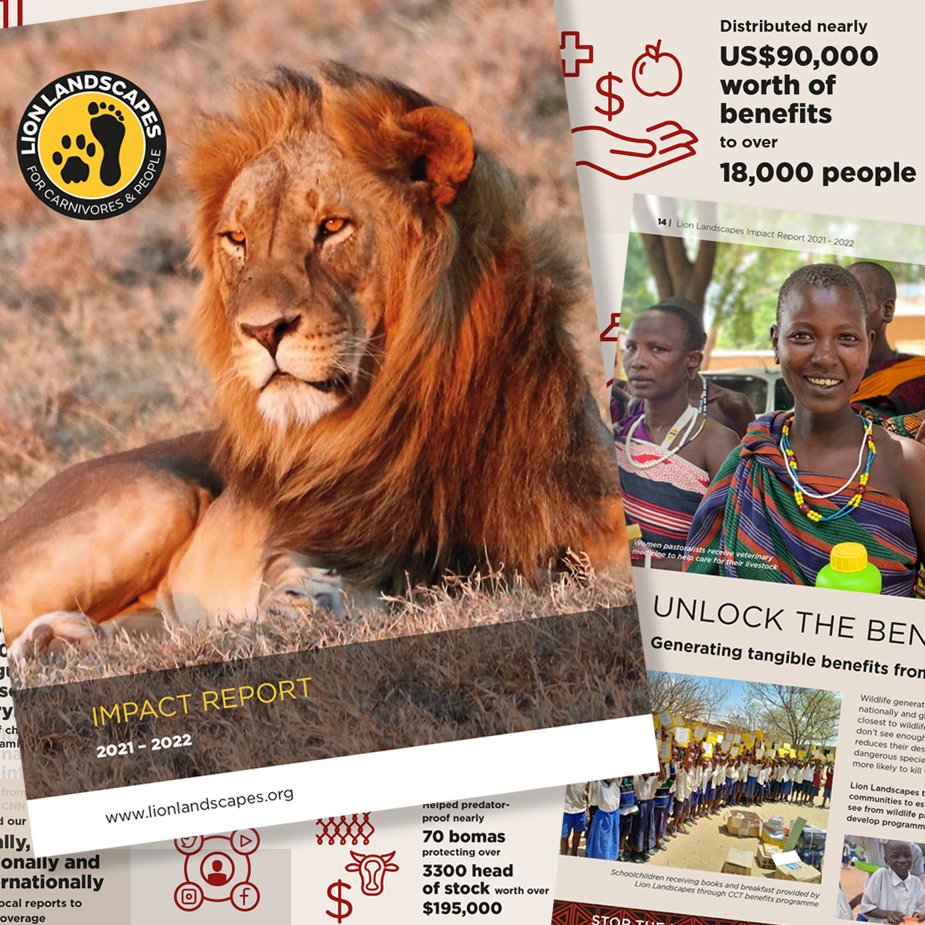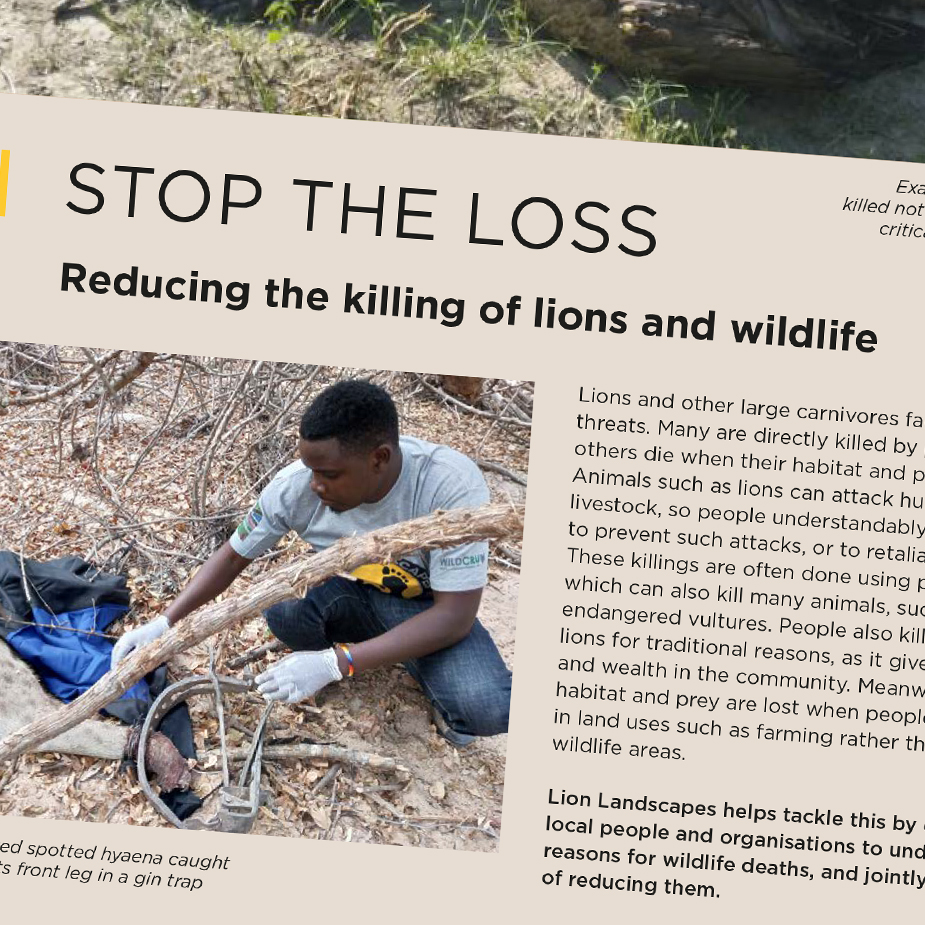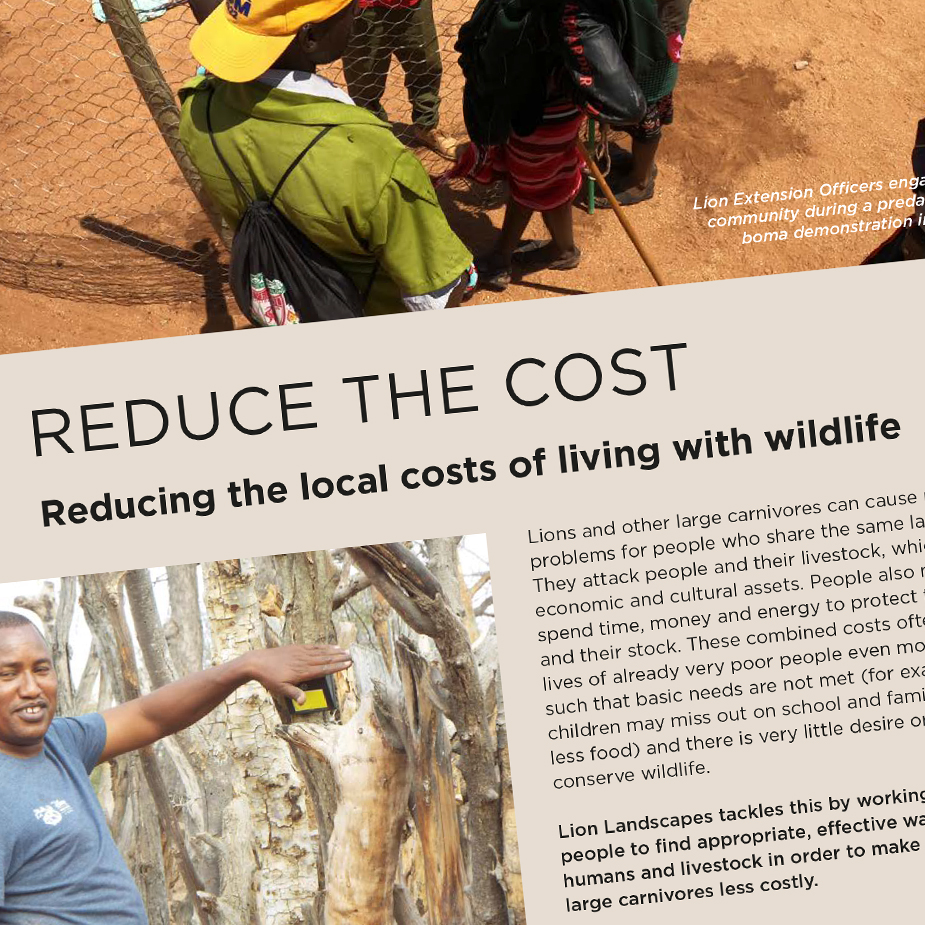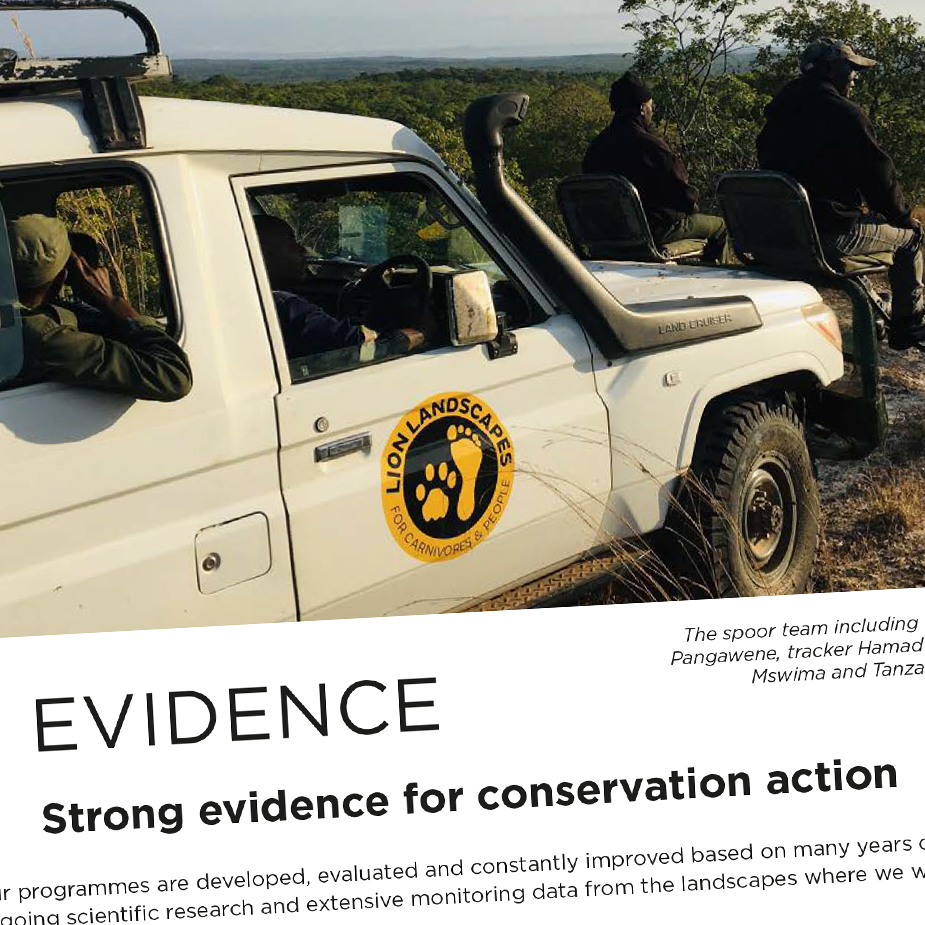News
Lion Landscapes conservation impacts
“Translating the global value of wildlife into tangible benefits for people living alongside it will help ensure the long-term wellbeing of communities, wildlife, and their shared environment.” This belief underpins the work of Lion Landscapes – an organisation co-run by WildCRU’s Director, Prof Amy Dickman.
With an emphasis on large carnivores, Lion Landscapes integrates local knowledge and experience with world-class science to deliver effective, evidence-based conservation. The organisation currently works in four landscapes in three countries – Laikipia in central Kenya, the Ruaha-Rungwa and Selous-Nyerere landscapes in Tanzania and the Lower Luangwa Valley in Zambia, comprising almost 200,000km2 in total.
Achieving and tracking conservation impacts is crucial both short and long-term. Lion Landscapes has just published their 2021-22 Impact Report to share challenges and achievements during this period. The report outlines progress made in decreasing the killing of lions and wildlife, reducing the local costs of living with wildlife, generating tangible benefits from wildlife presence, gathering strong evidence for conservation action and improving communication to support effective change.
Activities designed to meet these aims include conducting anti-poisoning training to tackle wildlife deaths, providing insight and materials for the creation of predator-proof livestock enclosures, establishing community agreements to generate direct revenue from conservation-friendly actions, sharing insights from Lion Landscapes’ research with policy makers, wildlife authorities and conservation partners as well as organising community conservation awareness events such as film nights.
In terms of numbers, over 50 community members were employed to help reduce threats to large carnivores in their area, almost 70 bomas were predator-proofed – protecting over 3,300 livestock animals, nearly US$90,000 worth of conservation benefits were distributed to over 18,000 people, 14 schools were supported and 53 full-time educational scholarships provided, ecological surveys were conducted across over 46,000km2, 16 scientific papers were produced and two policy documents contributed to, 2100 local-language conservation storybooks were distributed free of charge, with even more metrics included in the report.
Lessons learned included a rethink of dog breeds used as livestock guards – shifting towards local or cross breeds, and a remodelling of the Lion Ranger programme for community areas – leading to development of a new Lion Extension Officer model. Challenges were posed by severe drought in Kenya making communities less able to withstand losses from carnivores, insecurity in the region and ongoing impacts from COVID constraining tourist numbers and thus reduced sightings data from guides. Nevertheless, the project continues to learn, refine and persist in aligning carnivore conservation with human well-being wherever possible.
The full report is available to read and download here: https://www.lionlandscapes.org/impact-report
Report cover image by mark@markadlington.com, all other images by Lion Landscapes field teams









